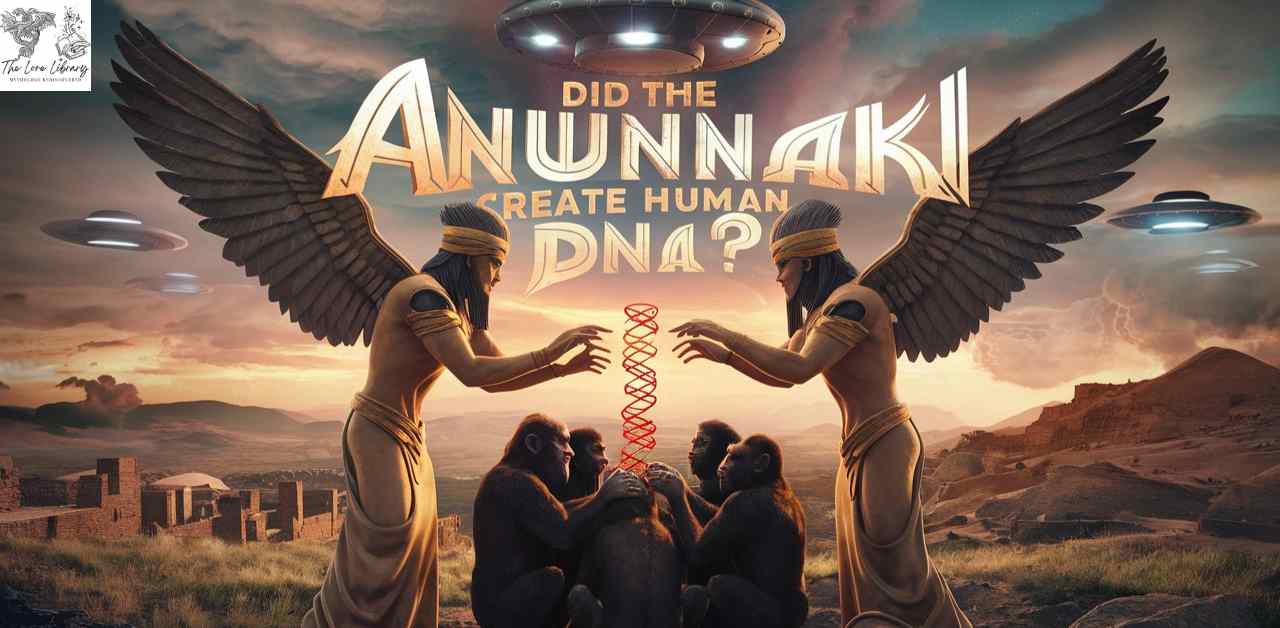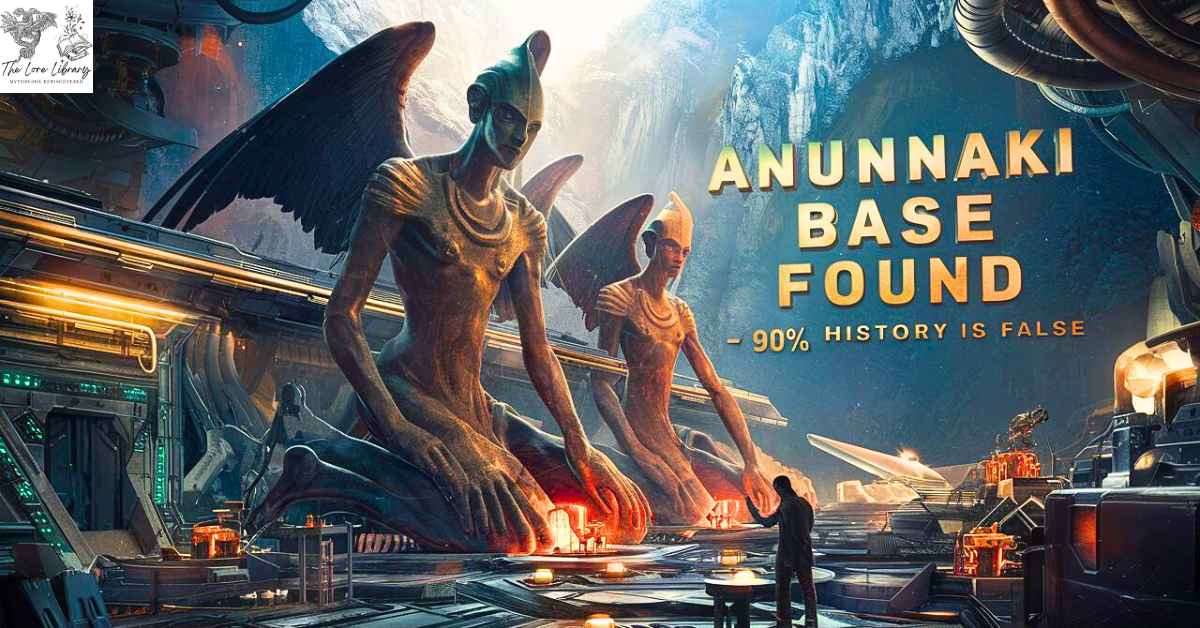The word Annunaki mean, “Those who came from the heavens to Earth,” a phrase that made clear their extraterrestrial origins. Many of the world’s oldest mythologies claim that governance over human society began with dominance over human beings established by superior beings or “gods.”
And then the job of rulership gets handed over at a later stage to human governors or Kings.. The Bible originated from the ancient Sumerian text. Text found with the same story. Pre-dating the Biblical accounts by thousands of years and documenting Ancient Aliens. The Sumerian story begins with the rulers coming down from the heavens. And the glyph for these rulers is a symbol pointing to the sky! The Annunaki were from the heavens. They were sky people! – WHY ARE WE HERE?

I’ve studied and taught through the book of Genesis many many times in churches all around the world and it’s very clear they’re not stories about God’s. They’re stories about “the powerful ones” in the Bible and the sky people, the Anunnaki in the Sumerian tablets.
In 1896, eminent scholar Nathaniel Schmidt was fired from his position as professor of Semitic languages at Colgate University. For 11 years, this American University had enjoyed Nathaniel Schmidt’s erudition and Semitic languages. He delivered numerous courses in Hebrew, Aramaic, Coptic, Arabic, Syriac and other ancient languages besides. In fact, Nathaniel Schmidt was one of America’s leading scholars in the field.
So why, after eleven years of outstanding achievement, was he tried for heresy and fired from his tenure in 1896? Though a devout Christian and a Baptist pastor, the authorities considered that his recent theological papers had struck at the very roots of two world religions: Christianity and Judaism.
What Nathaniel Schmidt had done “wrong” was read the Sumerian, Babylonian and Assyrian texts and noticed that they were full of fascinating parallels, stories that occurred there that were uncannily similar to all the stories of beginnings of the Bible.
Stories like Adam and Eve, the fall, Cain and Abel, the flood, the limiting of human life, the event at the Tower of Babel – and Schmidt’s work demonstrated that the Sumerian accounts and those that followed it from nearly 6,000 years ago were in all probability the source of all those familiar biblical stories. Now that was a problem in the 1890s because if you think about it, the church was still reeling from the after-effects of Charles Darwin’s On the Origin of Species.
It was busy putting together new doctrinal basis and new doctrines of biblical inerrancy to “shore up the ship” so the idea that the Bible might actually be based on somebody else’s stories was a bit of an embarrassment. It shouldn’t have been because Judaism and Christianity both find their roots in the story of a Sumerian family: the family of Abraham and Sarah.
Abraham and Sarah grew up and spent the best part of their lives in Ur of the Chaldees, a Sumerian culture, and so when they emigrated from there it’s hardly surprising that they would carry with them all the stories of beginnings that they had grown up with and sow them into the foundations of what was to become their culture, their religion and their Bible, and so it shouldn’t be a surprise that in the Bible we have a summary version of all these stories that pepper the Sumerian, Babylonian and Assyrian texts.
The problem and the shock horror is that the original versions, the Sumerian versions of these stories make no mention of God at all! In the Sumerian originals, these are stories of our ancestors’ contact with another species, a species called the Anunnaki. Could Judaism and Christianity’s familiar stories of God really be a retelling of our ancestors’ close encounters with extraterrestrials?
The cuneiform tablets which had fascinated Nathaniel Schmidt were first unearthed in the 1500s as colonial powers began to excavate the ancient sites of Mesopotamia. Over the decades that followed, some 200,000 clay tablets were uncovered. The tablets were adorned with strange edgings or glyphs made when the clay was soft.

Scholars of the day were divided as to the meanings of these markings, some believed the glyphs to be an unknown written language, and others refused to accept this since the tablets appeared to predate any known language. They presumed the markings to be no more than decoration, and so the tablets were archived. Their secrets were locked away for three centuries until, in 1835, Henry Rawlinson arrived in southwestern Iran.
Rawlinson was a military man. He was employed by the East India Tea Company and he was in Iran helping the Shah of Iran to train his troops. Now it’s worth pausing there for a moment because if you thought that corporations rivaling nation-states was something new… take a look at the East India Tea Company. A tea company that is able to move a standing army around the world and that trains the armies of nation-states.
That’s quite a tea company. In fact, Rawlinson’s presence in Iran wasn’t part of a quid pro quo for trading rights, he was there for access to the district of Behistun. He wanted to find the Behistun inscription.
The Behistun inscription was an ancient royal proclamation carved into a cliff face. It was written in three known languages: Persian, Elamite and Arcadian, which was the common language of the Mesopotamian cultures. The inscription expressed all three languages in cuneiform script. It was the translation key that cuneiform tablets had been waiting for.
The memories of Mesopotamia’s ancient cultures were suddenly an open book, the glyphs were not mere decoration after all, they were banking records, business agreements, shopping lists, contracts, recipes, inventories, royal histories and the most ancient narrative in the history of the world. It was in these ancient narratives that the source of the Bible’s familiar stories began to emerge.
At an academic level, Nathaniel Schmitt was in good company. He was one of a small number who began confronting us with this new layer of our history, and I should mention just to reassure you that shortly after Colgate University fired him he did get a new job with Cornell University, and he was professor of Semitic languages there for a full 36 years – so he did land on his feet! His work continued to argue that the cuneiforms reveal that our earliest histories are not about God, they are about our prehistoric contact with the Anunnaki.

In the 20th century, the writer Zecharia Sitchin began poring over the cuneiform texts. He highlighted the clear implications of the Sumerian stories that the Anunnaki were a powerful and advanced extraterrestrial species. Their arrival on planet Earth put them at the top of the terrestrial food chain.
To create a local workforce, the Anunnaki used sequences of their own genetic code to hybridize a primate ancestor into a human, ready to put to work for their Anunnaki masters. Sitchin argued the word “Anunnaki” means “those who came from the heavens to earth” – a phrase that made clear their extraterrestrial origin.
Zecharia Sitchin’s Theory About The Creation of Humanity by Anunnaki
Zecharia Sitchin was not an academic, he was not a PhD or a professor. He had a degree from the London School of Economics and worked in commerce and at the LSE. I should say, LSE is a pretty august institution. He wrote at a popular level, that’s to say for a general audience and not with the kind of referencing and footnotes that you’d expect to see in an academic kind of tone. Academic critics don’t like that. They think that it’s slack. Some might identify mistakes or bias in his work and that’s then their pretext to disregard his contribution, which is an important one.

Now some writers in the field reject Sitchin’s translation of the word “Anunnaki” and they would contend that the word’s usage tells us that it simply means “nobility” or “royalty”, “the rulers”. I’m not persuaded by that. It’s not that that’s not true, it’s just a very partial answer. It’s a very lazy explanation that simply doesn’t ask enough questions. Who were the rulers identified by this word? Why is that word associated with the rulers?
What does “Anunnaki” actually mean?
You see, if you look at the etymology of the word, at its root meanings, and look at the component parts, you have “Anu” which means “heavens”, “Ki” which means “earth”. “Anunnaki” are “those who came from the heavens to the earth” – you can follow the logic.
But even if you didn’t have that narrative embedded in the word itself, as soon as you read the cuneiform, the stories themselves unpack that that is exactly what was going on! And the glyph that they use to indicate the rulers – to come down from the heavens at the beginning of the story, that glyph simply indicates the sky. So these Anunnaki are from the heavens, they are sky people!
Many of the world’s oldest mythologies claim that governance over human society began with dominance over human beings being established by superior beings or gods, and then the job of rulership is handed over at a later stage to human governors or kings. Egyptian mythology holds such a narrative. Similarly, the Bible speaks of King Saul as the first human king over the people of God.
The Sumerian cuneiform also named their first human King, Gilgamesh. Gilgamesh is a transition King, a hybrid of human and Anunnaki. His name appears on one of the most famous of Mesopotamian artifacts, the Sumerian Kings list.
Among the shopping lists, legal agreements, business contracts and all the rest of the cuneiform tablets, there appears one that on first inspection is a dry record of a succession of Kings of Sumeria.
The most recent entries record reigns of 6 to 36 years. As we go further back on a timeline, the Kings list starts running with some odd-looking information because out of the blue we suddenly read of a dynasty that lasted twenty-four thousand, five hundred and ten years, three months and three and a half days.
Now that precision absolutely befits Sumerian culture because it’s from Sumerian culture that we get 360 degrees in a circle, 60 seconds in a minute, 60 minutes in an hour – so the precision doesn’t surprise us. What is odd is that that dynasty of twenty-four thousand, five hundred and ten years, three months and three and a half days was divided across no more than twenty-three kings, that’s an average reign of more than a thousand years each! And it’s not a one-off.
The dynasty concluded by the great flood lasted two hundred and forty-one thousand years shared by no more than eight kings, that’s an average reign of more than thirty thousand years!
Now some have tried to make the dates symbolic or have interpreted their unit of time differently but that doesn’t quite work when it’s an unbroken record of 6 to 36 year reigns to 36 thousand-year reigns, all in the same unit of time, all in the same narrative.
The narrative begins with non-human Kings who then hand over to human kings, and this elasticity of the length of their dynasties is another suggestion that the non-human kings are something quite different to human beings. It’s like comparing the lifespan of a human being with the lifespan of an ant!
The Kings list is not the only evidence pointing to an extraterrestrial hypothesis. The Sumerian version of the Tower of Babel speaks of fifty technicians who employ mysterious technology to dispatch 300 observers to their stations in the Stars. Read alongside the Genesis account, the two narratives confirm one another and paint a vivid picture. Babel was a Stargate – providing the observers rapid access to Space Stations.
The thing that got me into this whole field of research was an anomalous word in the book of Genesis. Finally, I allowed myself the time to sit down and really drill into what was going on.
Genesis uses two words for God, One is Elohim and one is Yahweh or Jehovah. Now Yahweh is the holy name given to Moses in a time centuries or millennia after all the action described in the stories of beginnings. So the fact that the word Yahweh appears in those much older stories clues us that we’re not reading the original version of the stories. The stories are being retold by someone after the time of Moses.
Now there’s a broad consensus among biblical scholars that the current version of the Old Testament, the Hebrew Scriptures, was edited or redacted sometime in the sixth century BCE, and that the redactor, by putting the name Yahweh into these older stories – the stories that Abraham and Sarah had brought with them – was telling the reader to regard them as God’s stories by using the later name. He’s also telling the reader this is not the original version, originally they were Elohim stories.
Now that word Elohim is a very interesting word because it’s a plural form word. It often exhibits plural behaviors “let us make, let us make the humans to look like one of us, we don’t want them to become too much like one of us” etc. The word Elohim often takes plural verb forms and is sometimes translated as God but in other places it gets translated as false gods or demons or angels or chieftains or land barons. So why this enormous elasticity in the word’s meaning?
Well, again we have to go back to the roots of the word and ask why is it used that way and why does it behave like a plural.
When you look at its component parts, the word Elohim means “the powers” or “the powerful ones”. Now when you read Genesis translating the word that way, the text changes and suddenly line up with the Sumerian texts, one by one they confirm each other’s stories, and it’s very clear they’re not stories about gods, they’re stories about “the powerful ones” in the Bible and the sky people, “the Anunnaki” in the Sumerian tablets.
But is there any material evidence that a non-human ruling presence ever occupied planet Earth? One might reasonably ask why have no physical remains of Anunnaki been found?
Firstly, I would note that the more we dig up ancient sites, the greater a diversity of ancient peoples we’re finding. If you think about the “hobbits” that were found in Indonesia, we called them hobbits, the proper name is Homo floresiensis, or the Giants of Noble County, or the red-haired Giants of North America, or the long skulls of Paracas etc, there’s a great range of people that we’re beginning to come across as we dig into our ancient past.
So how would we know if we found an Anunnaki? Well one obvious possibility is by DNA testing.
So if Gilgamesh really was a human-Anunnaki hybrid, then all we have to do is find the royal tomb and DNA test him. Well I believe that’s exactly what happened in Iraq in 2003. They went in, protected by American troops at the beginning of the 2003 Iraq invasion, and found Gilgamesh’s tomb. Fassbender spoke to the BBC. Just go on his website, you can read all about it! Now the official story is that having located the probable tomb site 16 years ago, we decided not to investigate any further!?
Similarly, in 1927, the British archaeologist Leonard Woolley discovered a person known as Queen Puabi. Now she was a high-ranking Sumerian leader who lived around 2500 BCE and they had found her remains. Today’s technology provides us with the opportunity to DNA test, we can now test Sumerian royalty to confirm whether it was entirely human.
The result, apparently we’ve decided “not to investigate any further.” Now what do you make of that? Wouldn’t you want to know?
But why would an extraterrestrial species be interested in governing a human population on planet Earth? Why would advanced beings from another planet have any interest in interfering with human evolution and managing a human population? Why would they teach prehistoric humans about mathematics, reading, legal and banking systems, contracts of employment, money and pricing mechanisms? And why would they then withdraw?
I wonder if our own behavior as a species on our own planet might give us an insight on what such colonization might look like, because when we colonize, we go in with force, we show our superiority and we take over. We provide the police, we provide the army, the education, we put the locals to work, we cream off the profits and the natural resources, enjoying all the benefits of sitting at the top of the economic tree with a powerful visible presence to keep control.
But after a while you can get the locals to do their own policing and their own school teaching. Let the locals become the lawyers and the bankers and the governors, as long as you have some control of the value of the money.
And as long as you set all the commodity prices and exchange rates, you don’t really need to maintain a visible presence anymore and so you can go home, you can live in another country and still enjoy all the benefits of sitting at the top of the economic tree.
Now that’s how we do it, it’s how we’ve done it from the Roman Empire to the Spanish, to the Dutch, the Portuguese, the British, the American, that’s how we do it. Is it possible that an ET presence may have colonized the world in our prehistoric past in a way that’s analogous?
That another species came and resided on planet Earth for a while, they sat at the top of the economic tree and enjoyed all the benefits of it and then withdrew in exactly the kind of way I’ve just mapped out?
Now I wonder how much like the Anunnaki we are? And as for what they were looking for, it could have been minerals, I believe it was. I think there’s strong evidence of prehistoric mines in southern Africa, it may well have been minerals but it could have been something else, something to do with the properties of planet Earth, and it might have been something to do with ourselves. Our uniqueness as homo sapiens.
Were our ancestors really engineered as workers toiling for the colonizers? Were the Anunnaki only interested in our planet’s resources and coldly indifferent to the progress of the human race? Other ancestral narratives speak of our human origins in exactly the same terms and yet there are other strands to the story.
The Greek, Babylonian narrative of Oannes and the Apkallu, speak of visitors helping and educating our human ancestors. Native American memory reports in two-dimensional and extraterrestrial visitors, nurturing the beginnings of human society. Zulu mythology speaks of our ancestors being nurtured by advanced beings. Might the Anunnaki have had a more generous motivation towards their human workforce?
References
- Sitchin, Z. (1976). The Stairway to Heaven. Avon Books.
- Kramer, S. N. (1963). The Sumerians: Their History, Culture, and Character. University of Chicago Press.
- Rawlinson, H. C. (1861). Inscription of Darius at Behistun. Journal of the Royal Asiatic Society of Great Britain and Ireland, 17, 62-97. Journal Link
Shop amazing Anunnaki Merchandise at our store, Follow us on Facebook, Instagram, And For More Interesting Content Also Subscribe To Our Youtube Channel.








